Biolblitz and Freshwater Life
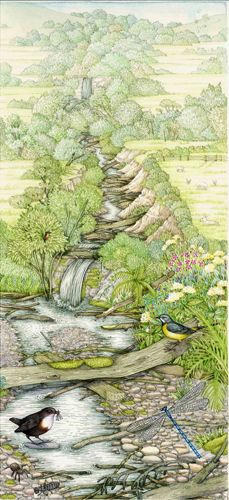
I recently went to a “bioblitz” day organised by Radnorshire Wildlife Trust, looking for freshwater life at their nature reserve in Tylcau hill. For a natural history illustrator, such an event is inspiring and educational.
I enjoyed the whole day enormously. I learnt a tremendous amount, especially about insects, thanks to the endless knowledge and enthusiasm brought by Phil Ward of RWT. Phil also happens to be the entomological recorder for the county. I now know my reed beetle, dock beetle, and upland click beetle (a beauty). I have got a lot better at spotting animals of all descriptions; including little froglettes which we encountered repeatedly.

How to look for freshwater life
Towards the end of this extremely interesting and enjoyable day, we took on the task of seeing what was living in the stream that runs through the reserve. We did this by stirring up a prescribed length of stream (which related to the stream width) for exactly three minutes. We caught everything we disturbed. Going through the finds and identifying them to family level came next. (Further classification to genus or species was done by Phil Ward and other keen entomologists later on).

Searching for fish
We were surprised not to find any bullhead fish as they’re common in streams such as this one. The reserves manager for RWT was keen to see if we could spot any fish at all – to no avail on this occasion, bar one tiny fry.
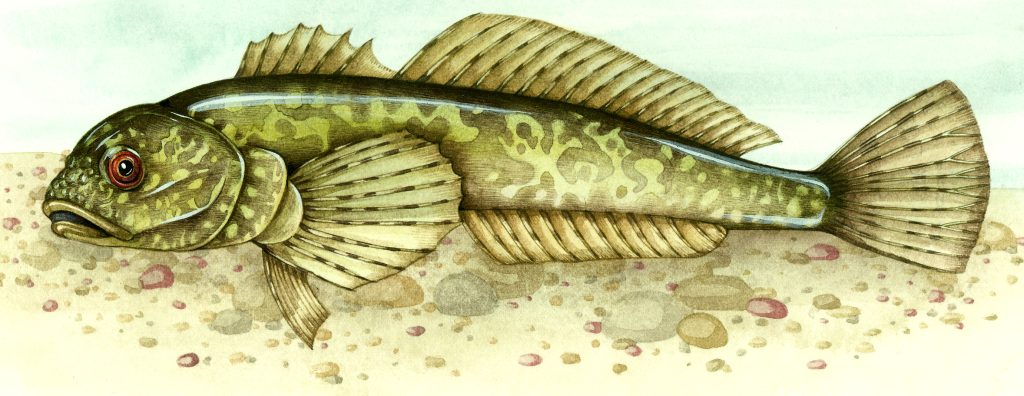
Freshwater life: Invertebrate variety
However, the invertebrate life we gathered was vibrant, diverse, and fascinating. The number of mayfly nymphs was amazing. This is encouraging. They tend to thrive only in very clean and oxygenated streams. We learnt that the larva can be burrowing, free-swimming, or live flattened against rocks. Nymphs graze on plants or algae; the burrowers may feed on silt in the mud. The adults have no mouth parts and all emerge simultaneously. No-one is sure why, but the final stage of mayfly nymphs emerge from the water, and are able to fly, before they turn into mature adults.
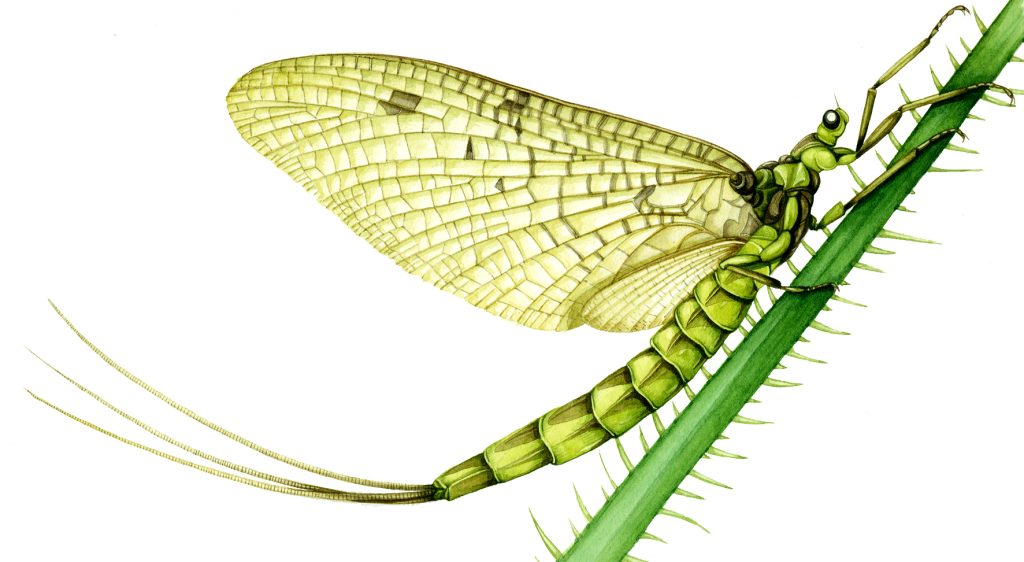
We found many different caddis fly larvae; some had built pebbly homes flat on the underside of stones; others had constructed intricate turrets from tiny grains of sand,; others had cobbled together a home from pebbles, and another species favoured snippets of twig, all laid vertically together, to make their homes. Each type of case was created by a different species of caddis fly larvae.
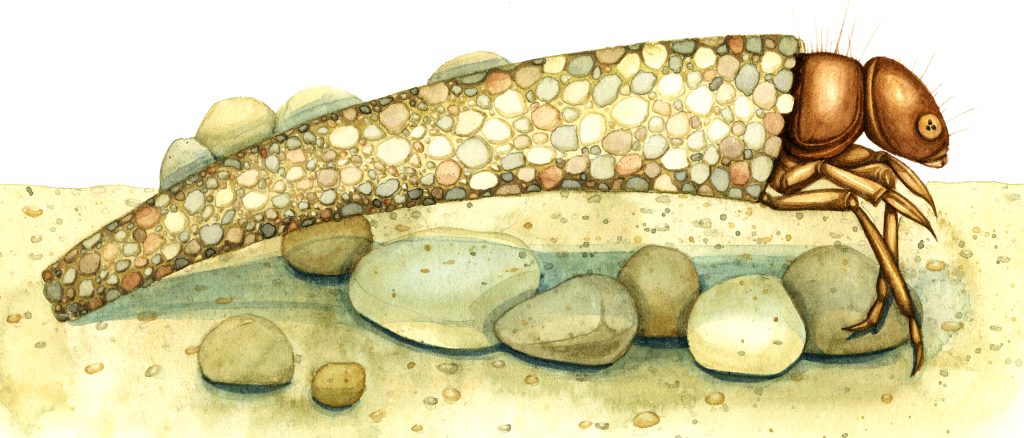
We also found stonefly nymphs, and alderfly larva (who differ in appearance to mayflies in having a single, feathery tail rather than three long tails). Freshwater shrimp were in evidence too.
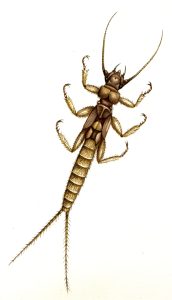
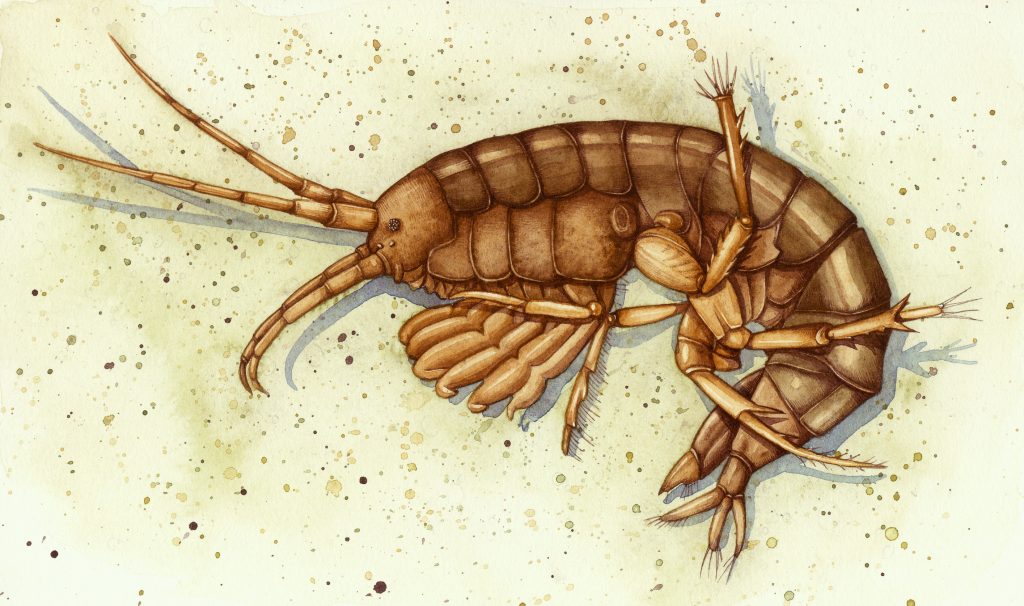
Follow up: Looking for Freshwater Life in a local stream
Fired up by this day out, I immediately became a family member of RWT, then I ordered a whole clutch of fold-out charts, produced by the Field Studies Council.
Thus armed, I went stream dipping a little closer to home, in the little river Edw near Erwood in Powys, and found some new organisms as well as caddis fly and mayfly nymphs. The most fascinating were the leeches. Only one species of leech will take human blood, the medicinal leech, and this is unfortunately now very rare (and not present in our sample).

Watching the leeches move in the Tupperware tub was a treat; the way they extended and contracted themselves was incredible, and their undulating swim was beautiful to behold.
We also found beetle and fly larvae, and large rafts of blueish springtails.
Using identification charts
Consulting the FSC Guide “The Freshwater name trail” I followed the instructions on how to calculate a biotic index for the habitat. This is done by adding up a series of “scores” given to stream animals, then dividing the total by the number of animal types found. Scores vary from 0 (no life) to 10 (clean and unpolluted stream). Our score at Aberedw was 6.7, and so I realised this stream was a little more polluted than the one we examined in Tyclau Hill with RWT.
I’d expected to come across dragonfly and damselfly larvae

but a little research shows these are uncommon in streams (although you do get demoiselle nymphs and adults in running water).
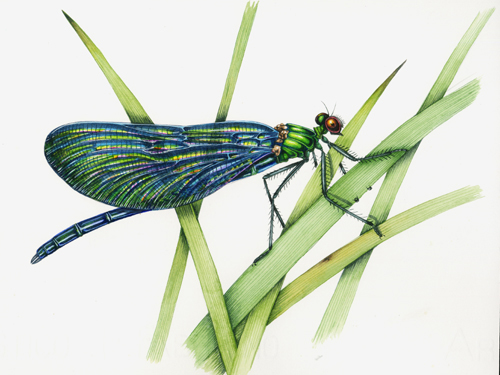
Not only have I learnt lots from the biolblitz, and been able to re-visit past natural history illustrations of freshwater life, but I’ve also rekindled my passion for seeking out life in streams and ponds; I can’t describe how thrilled I am to be paddling about in streams with a guide-book and a magnifying glass again. I tell you, this is the life!


Dear Sir/Madam
Can you please provide the scientific nomenclature and other details of the leech variety shown here in this page?
Regards
Hello Dr Sharma
The leech illustrated is the Medicinal leech, Hirudo medicinalis. It’s much rarer now in the UK than it used to be, I believe the species is very sensitive to pollutants. Hope this helps?
Lizzie